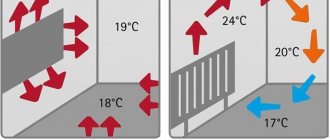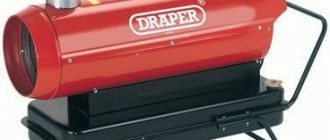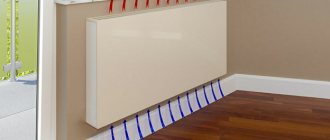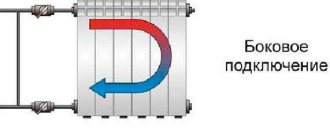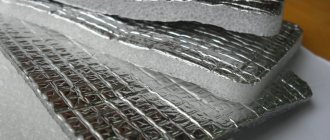Home heaters sold today come in a variety of modifications. A huge part of the popular heating units runs on electricity. To obtain valuable thermal energy, specialists have developed multifunctional equipment. The halogen heater is in greatest demand. The pros and cons of such a system must be studied before purchasing, since the final heating efficiency of the property depends on this.
Classic model
Areas of application
High-quality halogen heaters have become quite popular. In particular, this applies to the following industries:
- Outdoor heater. The device is often installed on the open terraces of restaurants and pubs.
- Technological direction. This applies to accelerated drying of treated surfaces after repair. The heaters compare favorably with all analogues in their high power, due to which they are used as express drying for residential and technical premises.
- Household sphere. It is advisable not to use an infrared heater in limited conditions for a long time. The emitted waves negatively affect the human body.
The halogen installation is distinguished by its practicality and reliability. But it is advisable to use this heater as an auxiliary element, since it cannot replace full heating. But if there is an urgent need to heat the room in a short time, then this is the most suitable option.

Application in standard domestic conditions
Advantages and disadvantages
IR heaters based on halogen lamps, like all other heating devices, have their advantages and disadvantages.
Let's list the advantages:
- high speed of achieving the effect - the effect of the device is felt within a few minutes after switching on;
- silent operation – in the absence of a ventilation function, the heater is absolutely silent;
- uniform heating of the room - absence of convection and dust accumulation;
- compactness of the devices and their relatively low weight;
- Possibility of use in fresh air and in drafts;
- affordable price range.
There are much fewer disadvantages of a halogen heater, but it is still better to know about them, so we list them:
- the undesirability of prolonged exposure to short-wave radiation from halogen lamps on the human body;
- glow of lamps during operation.
The list of characteristics of a halogen infrared heater, specifying its advantages and disadvantages, allows us to assess the effectiveness and feasibility of its use in domestic conditions in comparison with other heating devices.
Design features
The design of an infrared device directly depends on the principle of its operation. Experts recommend paying attention to the method of generation and intensity of heat transfer to the environment. The design itself includes an aesthetically attractive housing for safe operation, in which one or several halogen lamps can be installed. All these elements in the housing are located against the background of a heat-resistant mirror reflector, due to which the radiation flux receives a concentrated directionality.
Attention! The possibility of getting burned as a result of accidentally touching a hot lamp is completely excluded, since there is a protective mesh on the body itself in the direction of the action of warm radiation.
Common quartz heaters operate stably from a regular power supply. The models sold today are small in size and minimal in weight, durable in operation, and are also widely in demand in the household industry. Such heaters are often equipped with a remote control system.
Halogen heater device
The design of halogen heaters is based on halogen lamps. The quantity used in the production process allows us to obtain devices of varying power.
The manufacturer installs a reflector element in the body part, which allows the direction of the heat flow to be formed. Halogen lamps are covered with a mesh to prevent burns.
The heating device must be connected to the electrical network. The manufacturer equips the device with various power modes; they can be adjusted using the regulator located on the heater panel.
Principle of operation
The standard halogen lamp performs all the functions of a heating element. It emits a powerful stream of waves in the light and infrared range. The product itself is a round tube with a length of 23 to 50 cm. To fill this vessel, bromine or iodine is used, which prevents premature burnout of the tungsten filament-spiral during heating from the passage of electric current.
To create optimal living conditions in a spacious house and an ordinary apartment, an infrared type of heater is often used. It is preferable to buy devices from popular manufacturers who have been producing heating equipment at a serial level for several years.
In high-quality units, the flow of infrared healing from the lamp, which is installed horizontally in the housing, heats not only the air in its path, but also all nearby objects. Thanks to this, the room is heated as evenly as possible, without convection from the main heat source and dust accumulation. Using the power regulator, the user can independently select the most suitable operating mode of the heater.
Advice! You should always remember that an excessive increase in temperature in a closed space causes a gradual decrease in the air humidity required for each person. If several halogen systems are installed in one room, then you need to purchase a special humidifier.
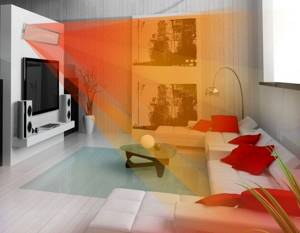
Classical infrared scattering
Possible disadvantages
- One of the disadvantages of the device is its glow . In a dark room it will be quite bright. What can interfere with sleep?
- Heat flows in a directional flow . This means that it will be concentrated in one room. Even if there are large passages between rooms, heat will not spread. Because it is not the air that is heated, but the objects. Such devices are not suitable for general heating of all rooms or large areas.
- You cannot stay in the field of direct action of rays for a long time . Since the action of the rays will be directed towards a person, this is harmful. Also, prolonged exposure to the device has a detrimental effect on the retina of the eye.
- From the radiation of the heater, you can get a burn , just like from the sun's rays. Don't doze off while basking in its rays.
- such devices with lamps that have a coating. This reduces the glow.
If the area that needs to be heated is large, then it is better to use several small heaters than one of impressive power, which has more negative points. Strong radiation, high risk of burns.
Positive and negative characteristics
Halogen room air heaters have their own advantages and disadvantages. When choosing a high-quality heating device, it is recommended to pay special attention to all the criteria that allow you to evaluate the performance of the unit in order to select the most suitable option.
The main advantages include:
- Quiet operation. The exception category includes only those models that have a built-in fan.
- Heats up quickly. Just a few minutes are enough to make the room warmer and more comfortable.
- Affordable price. Excellent value for money.
- Uniform heating of the room.
- The heater can be used outdoors.
Flaws:
- Emitting bright light. For many users, this option is not a disadvantage, but quite the contrary. The buyer should be prepared for the fact that the lamp will emit yellow light, which may interfere with rest at night.
- It is prohibited to be exposed to specific short-wave radiation for a long time, as this can negatively affect health.
If you clearly analyze all the properties of a halogen device, you can be guaranteed to determine whether it is suitable for heating a private home or any other structure.
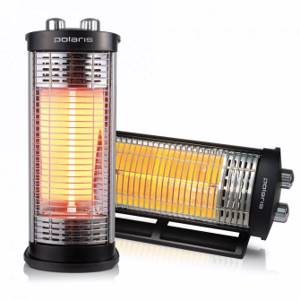
Available carbon model
Comparative characteristics
To understand which heater is better, it is worth familiarizing yourself with the features of each type and design.
Halogen or quartz
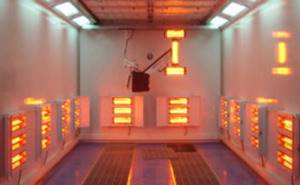
Quartz implies the presence of a lamp made of quartz glass. This glass is stronger than regular glass, but transmits infrared rays better.
It heats up faster, but the device itself does not, which improves safety indicators. But before purchasing, it is important to check the integrity of all components of the structure: body, foil, insulator and heating element. These heaters glow red, which is irritating to the eye.
Halogen or carbon
Carbon combines the advantages of halogen and quartz options. The heating coil is made from high-strength carbon fibers, which guarantees durability and quick heating. But such models will cost much more than halogen ones. This design demonstrates high efficiency, but the product is not suitable for people with symptoms of asthma for constant use. Consumes a lot of energy - 1-2.5 kW and lasts an average of 2 years.
Types of devices
Modern halogen devices are usually divided into several main categories:
- Household. Power reaches 3 kW.
- Execution type.
- Industrial. The standard power rating starts at 4 kW or more.
- Purpose.
- Ceiling. They are fixed with powerful brackets to a standard ceiling base. If possible, then installation is carried out in a special suspended structure. Thanks to this, the equipment takes up minimal free space. This option is only appropriate if the ceiling height is 3 meters or more. The user must build a reliable heat-resistant thermal insulation base.
- Wall-mounted. Used in small spaces. Installation is carried out at a height of at least 1.5 m from the floor. It is necessary to ensure high-quality thermal insulation of the base.
- Floor-standing. This is the most popular option. Many devices are sold with small wheels for comfortable movement.
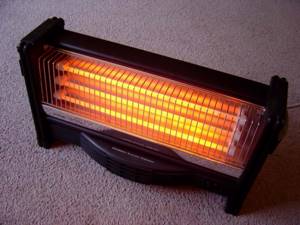
High power floor unit
Other types of heating elements
The shell, as you already know, varies depending on the type of material used. Let's get acquainted with each of them.
Option #1. Quartz elements
Such elements (they are also called carbon elements) are produced in the form of a quartz tube, inside of which - in a complete vacuum - a carbon spiral is located. The main advantage of this type of device is considered to be record-fast heating, and also the fact that its efficiency significantly exceeds that of a heated metal plate. Although, in principle, there are also disadvantages: a short operational life (usually only 2 years) and consumption of a large amount of electricity (from 1 to 2.5 kilowatts). In addition, they glow red, which cannot but irritate the eyes (which is why asthmatics and people suffering from allergies do not use such heaters).

Conclusions: such a heater is optimal for short-term use, since using it for a long time is harmful.
Option #2. Ceramic elements
Heating elements covered with a ceramic shell have effective protection, which means they practically do not glow during operation. The service life in this case is at least 3 years, but such devices are noticeably more expensive than quartz ones. However, ceramic models are more economical and consume on average from 0.05 to 2 kilowatts. It is worth noting that such a significant scatter is explained by the design features of the elements.
Despite the insufficiently fast heating and cooling, they are used - and very often - in saunas and hospitals, since their durability is at a high level.
Option #3. Metal elements
Tubular elements made of metal look similar to ceramic models, but they are noticeably more expensive. The efficiency of these heaters is high, the devices are reliable and easy to use.

Note! Metal elements are characterized by the fact that they crackle during operation, and if this does not irritate you, then this option is for you! They crack because the aluminum body and the spiral made of steel have different thermal expansion rates.
When purchasing this heater, pay special attention to the characteristics of the heating element, insulating material, housing and foil.
Primary requirements
When choosing a multifunctional heater, you must follow several important rules:
- Degree of installation reliability. It all depends on the condition of the ceilings and walls, the possibility of ensuring safe operation and load-bearing capacity.
- Optimal power indicators. To heat a room of 12 m², only 1 kW is needed. But this is only if there are no piercing drafts, and high-quality thermal insulation has been performed.
- Internal device safety. A high-quality heater model must be equipped with a sensor to protect against possible overheating. Due to this, you can significantly extend the life of the heating unit and prevent ignition of the heater itself.
- Outdoor safety. The body of the unit must be not only aesthetically attractive, but also reliable. It is necessary to completely eliminate the possibility of electrical injury and burns. For these purposes, a basalt or ceramic insulator is installed in the internal compartment, as well as a grounding device.
Advice! When purchasing a heater, you should give preference to products from well-known and time-tested manufacturers. The purchase of low-quality units is fraught not only with premature failure of the entire system, but also with the occurrence of a fire and even injury to the user.
When choosing a quality installation, be sure to double-check for additional functions. Most often this concerns the possibility of protecting a home from various emergency situations. An important parameter is the method of fastening. Most models can be fixed exclusively to the ceiling or installed on the floor.
The wall mounting method is the least common. It is also necessary to pay attention to the manufacturer. It is best to buy those units that have already received positive reviews and demand among other consumers.

A universal option for home and office
Features of operation
It is easiest to care for ceiling-type heaters, since they are completely inaccessible to small children and they are not afraid of common mechanical damage. The user only needs to keep the equipment clean. Floor and wall models are best placed at a distance of one meter from other objects. Experts strictly prohibit placing any items for drying or heating on halogen installations. The devices should also not be covered, as this may cause the coating to ignite, cause thermal burns, or overheat the heater.
It is better to refrain from being exposed to infrared radiation. Otherwise, a person can get quite a serious burn. All radiation from halogen devices is short-wave, which is why their effect on a living organism is undesirable.
Attention! If the area of the heated room is large, then to ensure the most comfortable temperature conditions it is necessary to use several low-power halogen heaters at once. Using one device with high performance characteristics is fraught with many more negative factors.
Experts recommend purchasing equipment with high-quality lamps that are treated with a special coating that reduces their glow during operation.

Traditional wall mounting
Pros and cons of a halogen heater
Among the main advantages of halogen appliances, it is worth highlighting:
- fire safety, which makes it possible to install them in wooden houses;
- rapid heating of the room (radiation heats not only objects in the room, but also animals and humans);
- no noise during operation;
- durability, service life can exceed 20 years;
- high efficiency of the device;
- temperature control and the ability to set the heater shutdown time;
- no release of hazardous substances during operation of the device;
- The emitter helps destroy viruses that are dangerous to humans.
The disadvantages of a halogen heater include:
- rapid decrease in room temperature after the device is turned off;
- overdrying of hard surfaces;
- the need to use humidifiers;
- negative impact on paint and varnish coatings and furniture fabrics.
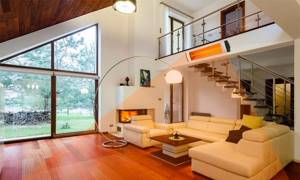
It is recommended to place a wall-mounted heating device at a distance of 100-150 cm from the surface of the floor and ceiling
Safety regulations
Like any other unit that operates from the mains, high-quality halogen heaters require compliance with certain rules during operation:
- The minimum distance from the device to the nearest object should be 1 m.
- The housing must be grounded.
- It is prohibited to simultaneously connect several halogen-type devices to one outlet to avoid overloading the power supply.
- To install wall-mounted equipment, it is necessary to provide a solid base made of heat-resistant material purchased from a specialized store.
- It is better not to leave the device on all night.
- It is prohibited to operate the heater without a protective front mesh.
- All radiation lamps must be kept absolutely clean, since even a slight accumulation of dust can cause a fire when connected to the network.

A professional approach to heating a spacious room
Popular floor-standing models
Products from this category are in greatest demand among both professionals and ordinary consumers. The unit can be easily moved from one corner to another, as the manufacturers have provided a comfortable handle and durable wheels. In terms of weight, this heater is one of the lightest and most compact. It can be installed even in limited space. The device can also be used as an auxiliary source of room lighting.
Among all existing units, the following models are in greatest demand:
- Saturn ST-HT0491. This heater has the advantage of being horizontally positioned on a vertical leg. The user can independently choose the most suitable installation method: wall or floor. Manufacturers produce a 2500 W unit for heating rooms with an area of 25 m². This model can also be used as an outdoor heater, spreading the generated heat over an area of up to 11 m². The system has 3 power modes.
- Runwin New York Gold Time. A universal floor-mounted heater. The standard power rating is 2100 W, which is quite enough for an area of 16-20 m². The system is equipped with a universal work countdown timer.
- Enders Barcelona. The power is exactly the same as the previous model. The heater is in great demand, as it has proven itself among users exclusively on the positive side.
- NeoClima NC-CH-3000. This is a carbon infrared unit with a power of 3000 W. The device is placed on the floor, but only after preliminary preparation of the base. The maximum heated area is 45 m². Control is carried out mechanically. The unit weighs 2 kg, so moving the product will not be difficult.
- Almac IK11. Affordable and economical model. The heated area is 25 m². The weight of the device is 3 kg. Installation can be performed on the ceiling, but the maximum distance from the floor level should not exceed 3.7 m. It is better to entrust the installation to professionals to avoid critical mistakes.
The video provides a more detailed and informative overview of the Almac model:
